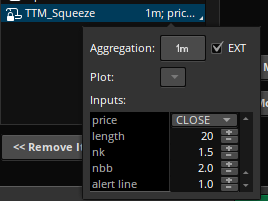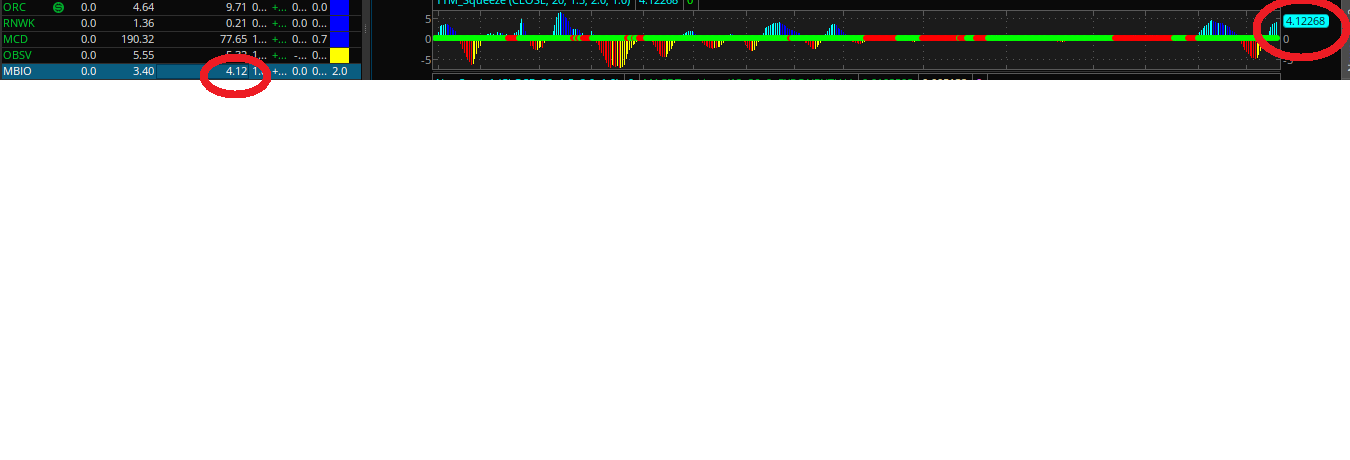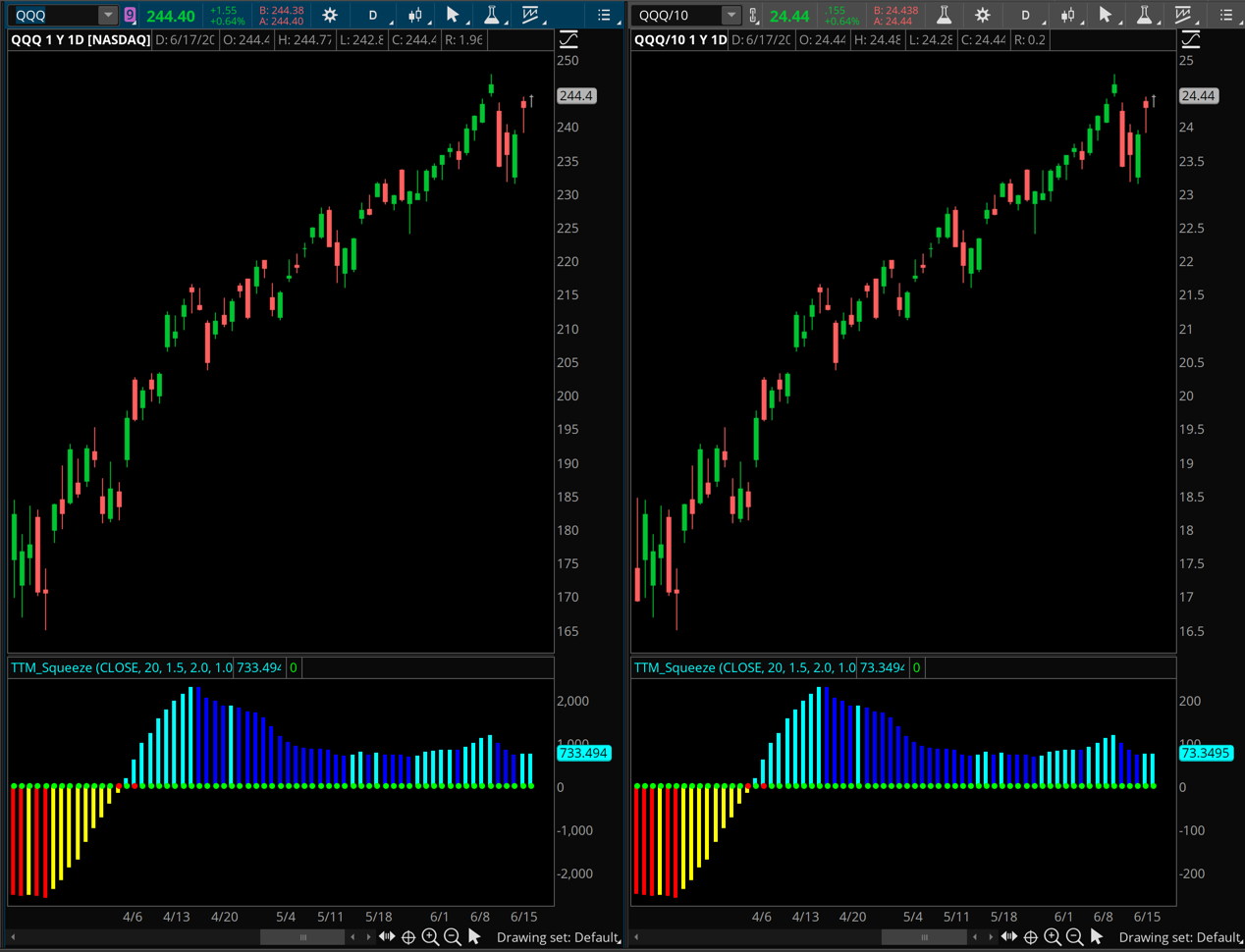| ♥ 0 |
Hi Pete, I want to use the TTM Squeeze Value in a mathematical formula in my scan. However, I cannot figure out how to make the Squeeze a value in a scan. I can make it work in the watchlist. In watchlist, I select TTM Squeeze, and I can change the time period to any time I want and it displays as a value. It matches the chart. I attached photos showing that. I tried copying the thinkscript editor code to the scan, but it does not work. It doesn’t recognize “reference TTM_Squeeze()”. How can I get the scanner to express the Squeeze as a value? Thanks a lot for your help! Erik RESOLVED
Marked as spam
|
|
Private answer
First, a word of caution. The value of the histogram on TTM_Squeeze will vary based on the value of the stock. So a value of 4.122 on a stock that is trading at 3.40 is going to mean something entirely different for a stock that is trading at 190.32. So my opinion is that the premise of your approach is flawed. The histogram of the TTM_Squeeze is NOT like the RSI or the Stochastic, which are true oscillators that vary within a fixed range. In case you are struggling to understand this I can describe it graphically. Set two charts to the same ticker symbol side by side. Add "/10" to the ticker symbol on one of the charts. This divides the price of the stock by 10. So for the example below a chart of QQQ trades at 244.4 while the chart on the right is set to QQQ/10 and trades at a value of 24.44. Check the screenshots below and compare the value of the TTM_Squeeze histogram. Same exact price structure. Completely different values. Now try doing this with the RSI or Stochastic and you will find the values between the two charts are identical. Boom! Now that your mind has been expanded, (and assuming you still want to build this scan), you can generate your scan very simply using the Condition Wizard. No need to understand the least thing about writing code. Just a few clicks of the mouse. Details here: https://www.hahn-tech.com/thinkorswim-condition-wizard/
Marked as spam
|
Please log in to post questions.



